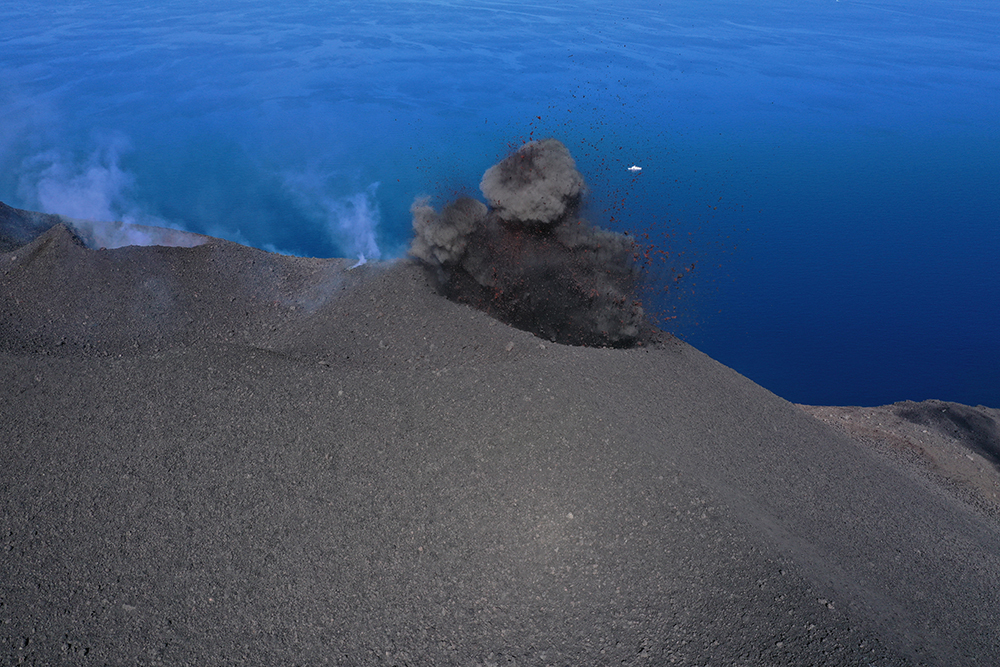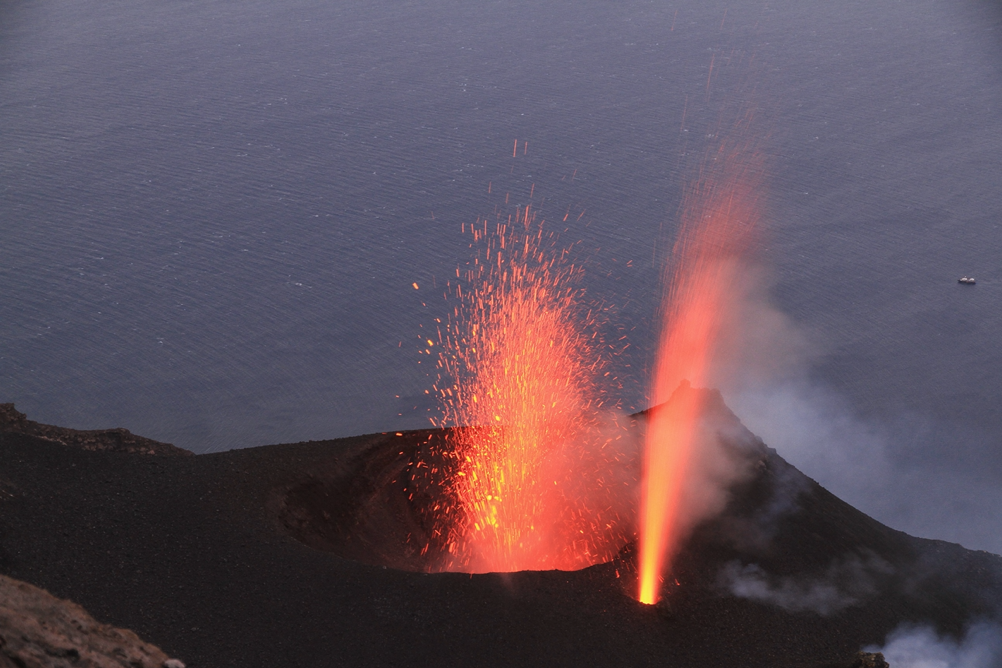Strombolian activity
"Stromboli" is the name of both the volcano and the northernmost island of the Aeolian archipelago. Were it not for the presence of the volcano, this island, the most remote and perhaps the most inaccessible of all the Aeolian Islands, would hardly enjoy such fame. But the Stromboli volcano, with its incessant activity, gives the island a unique charm. It is impossible to think of the island of Stromboli without also thinking of the Stromboli volcano. The presence of the volcano pervades the island.
Giuseppe Mercalli (1850-1914), great seismologist and volcanologist, clearly recognized the peculiarity of this volcano: "Stromboli, with its tireless and rhythmic activity, alone revealed to geologists much of the mechanism of the eruptions" (from "Volcani and volcanic phenomena in Italy ", Milan 1883.
Again Mercalli, in the same book, recalls how important the contribution of studies on Italian volcanoes is to the progress of volcanology. Many terms of the Italian language such as "bocca", "lava", "lapillo" or "Strombolian" activity, are now universally adopted terms in volcanology dictionaries in whatever language.
“Strombolian”, in fact, is the typical persistent eruptive activity at the Stromboli volcano, and its study is therefore central to Progetto Uno. Strombolian activity is characterized by the expulsion of incandescent slag, lapilli and lava bombs up to a height of tens or hundreds of meters above the eruptive vent. A Strombolian-type activity indicates a relatively low-level volcanic eruption, during which a modest amount of energy is released. However, as already mentioned elsewhere in the website, the ordinary activity of the Stromboli volcano occasionally changes, becoming more energetic. Understanding when the volcano is about to implement this change is the main objective of Progetto Uno.
Foto
Example of Strombolian activity at the Stromboli North Crater as seen from the shelters at the top of the volcano (15 June 2021, photo by Daniele Andronico). The height reached by the ejected products is about 50 meters above the eruptive vent.
Strombolian activity viewed from the top of the volcano, the thyrrhenian sea in the background (photo by Tullio Ricci)
Incandescent gas jet and Strombolian explosion inside the crater terrace, May 2013 (photo credit: Daniele Andronico)
Video
The volcanic activity of Stromboli is not only "strombolian". Active vents often produce spattering of lava. This activity tends to form small "spatter cones" formed by spatters welded on top of each other.
Links
Stromboli e le sue esplosioni (in italian)
I parossismi di Stromboli: ovvero gli “scatti del vulcano” (in italian)
The 3 July 2019 paroxysm of Stromboli and its activity during the following days
Nuovo parossismo a Stromboli, 28 agosto 2019 (in italian)
Stromboli, attività del 19 maggio 2021 (in italian)
Quando un flusso piroclastico scorre sul mare: esempi a Stromboli e altri vulcani (in italian)





